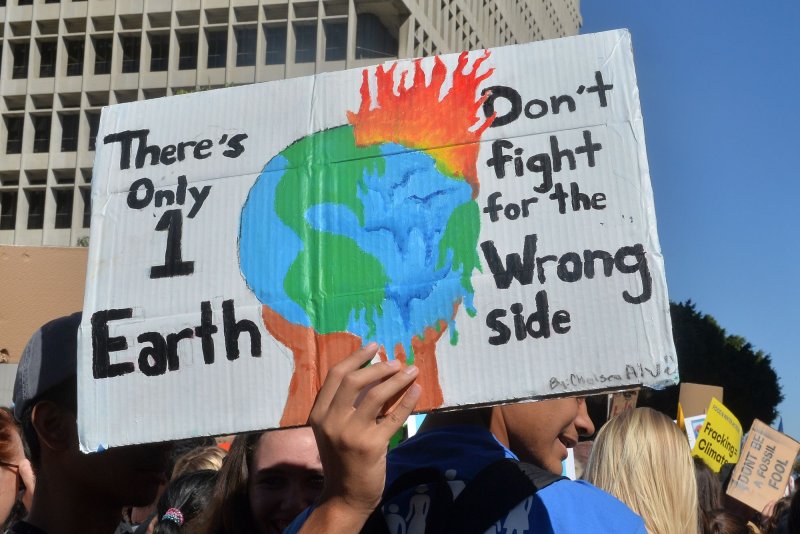
Extreme weather events have increased over the last two decades, a new report shows. Fiji is shown after being hit by a cyclone in 2016. File Photo by OCHA/Danielle Parry
Oct. 12 (UPI) -- United Nations researchers said Monday climate disasters have risen at a "staggering" rate in the first 20 years of this century.
From 2000-2019, 7,348 disaster events occurred worldwide, killing 1.23 million people, affecting 4.2 billion people, and resulting in approximately $2.97 trillion in global economic losses, researchers said.
These new figures show a "staggering" rise in climate disasters compared with the previous two decades, according to researchers.
The previous 20-year period, from 1980 to 1999, had 4,212 reported disasters from natural hazards, with 1.19 million deaths, more than 3 billion people affected and economic losses totaling $1.63 trillion.
RELATED Study: Sicker livestock emit more methane, accelerating climate change
Researchers said that better reporting may explain some of the increase, but the significant rise in climate-related emergency was the main reason for the increase.
Climate-related events, including extreme weather events, rose from 3,653 (1980-1999) to 6,681 (2000-2019), according to the report. Major floods alone more than doubled in the last 20 years, from 1,389 to 3,254, and the incidence of storms rose from 1,457 to 2,034.
Floods accounted for more than 40% of disasters affecting 1.65 billion people, storms 28%, earthquakes 8%, and extreme temperatures 6%.
RELATED Rising nitrous oxide emissions could put Paris Agreement goals out of reach
"This is clear evidence that in a world where the global average temperature in 2019 was 1.1 degrees Celsius above the pre-industrial period, the impacts are being felt in the increased frequency of extreme weather events including heatwaves, droughts, flooding, winter storms, hurricanes and wildfires," the report said.
U.N. Office on Disaster Risk Reduction Chief Mami Mizutori said that disaster management agencies have "succeeded in saving many lives," through improving preparation, and dedicated staff and volunteers, but industrial nations are "failing miserably" in curbing greenhouse gas emissions.
"Disaster risk governance depends on political leadership above all, and delivery on the promises made when the Paris agreement and the Sendai Framework for Disaster Risk Reduction were adopted," Mizutori said. "But the sad fact is that we are willfully destructive. And that is the conclusion of this report; COVID-19 is but the latest proof that politicians and business leaders have yet to tune into the world around them."
Disasters include a dramatic rise in major fire events, such as over 4 million acres burning in California, Australia's 2019 bush fires that killed or displaced nearly 3 billion animals, illegal fires in the Amazon, and more than 100 fires in the arctic circle last year, a video linked to a U.N. Office Twitter post shows.
The report called the "Human Cost of Disasters" was published on the heels of Oct. 13, which marks the International Day for Disaster Risk Reduction.
Report data came from the Emergency Events Database that records disasters that have killed 10 or more people; affected 100 or more people; resulted in a declared state of emergency; or call for international assistance.
Belgium's Center for Research on the Epidemiology of Disasters at UCLouvain maintains the database.
























